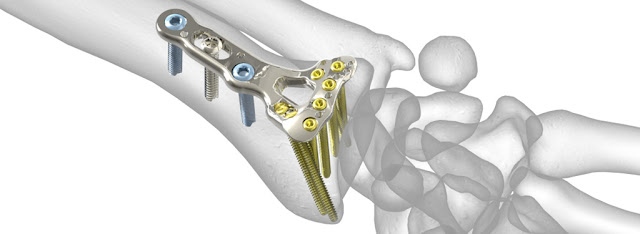The Global Radial Head Resection Implants Market Is Witnessing High Growth Owing To the Increasing Incidence of Radial Head Fractures in the World

Global Radial Head Resection Implants Market
Radial
Head Resection Implants Market - Global Industry Insights, Trends, Outlook, and
Opportunity Analysis, 2022-2028.
Market Overview:
Radial
head fractures are common injuries that affect both men and women. They are
usually caused by a fall onto an extended arm or hand that causes the radial
head to strike the humerus. The radial head is a specialized bone in the elbow
that helps stabilize the joint during motion. Symptoms of a radial head
fracture include pain and swelling in the elbow. It may also be difficult to
move the elbow due to the pain and stiffness. The doctor will order X-rays of
the elbow to see what is broken and what is not. Loose-stemmed prostheses have
been used for comminuted radial head fractures with or without associated elbow
instability in the chronic setting. These implants can restore load sharing
between the ulna and radius, help prevent proximal migration of the radial
head, and improve elbow function. A non-articulating portion of the radial head
has been deemed to be a “safe zone” for screw fixation of displaced fractures,
as shown in. This safe zone encompasses a 90 degrees angle that is localized by
palpation of the radial styloid and Lister’s tubercle.
Competitive Landscape:
Major
players operating in the global
radial head resection implants market include Stryker, Smith &
Nephew Plc, Wright Medical Technology, Inc., and Biomet, Inc.
Key Market Drivers:
The
increasing incidence of radial head fractures in the world is expected to
augment the growth of the global radial head resection implants market. For
instance, according to the Boston Medical Center, radial fractures are common
injuries that occur in around 20% of all acute elbow injuries. The radial head
is a concave surface that matches the convex surface of the capitellum of the
humerus. It articulates with both the capitellum and the ulna, allowing for
movement during elbow flexion-extension and supination-pronation. Just distal
to the radial head is the annular ligament that holds the radius to the ulna.
This ligament also allows some translation during the same movements as the
radial head. Moreover, high advancements related to implant technologies are
estimated to enhance the growth of the global radial head resection implants
market. Global
ribonucleic acid (RNA) markers market is estimated to be valued at US$ 226.6 million in 2023 and
is expected to exhibit a CAGR of 8.76% during
the forecast period (2023-2030).
Covid-19 Impact Analysis:
During
the COVID-19 pandemic, the global radial
head resection implants market has dealt with several challenges. The
global healthcare sector witnessed a heavy burden, owing to the rising COVID-19
positive cases in the world. This affected the quality and quantity of several
healthcare services. Moreover, lockdown measures in several regions also
impacted market growth.
Key Takeaways:
·
North America is
expected to dominate the growth of the global radial head resection implants
market, owing to the increasing prevalence of healthcare centers in the region.
For instance, according to the American Hospital Association, there are around
6093 hospitals in the United States.
·
The Asia Pacific
is estimated to witness high growth in the global radial head resection
implants market, owing to the high expansion of hospitals in the region. For
instance, according to the Indian Hospital Association, there are around 69
thousand private and public hospitals in India.



Comments
Post a Comment